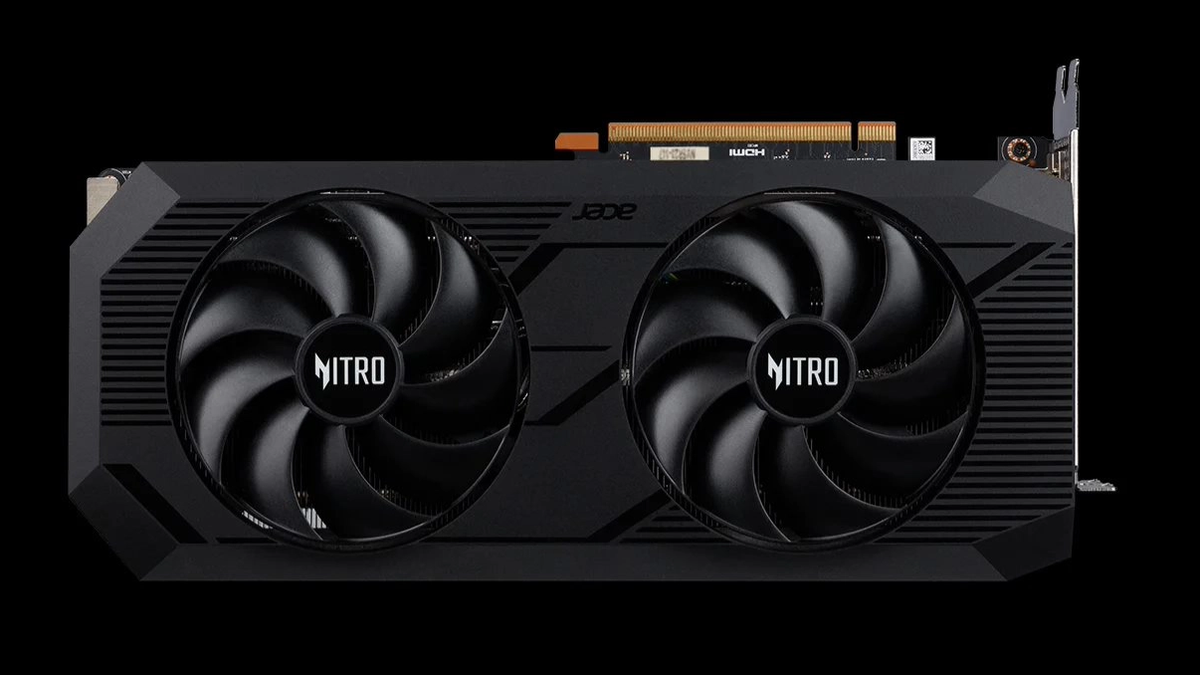Earlier today, Acer dropped its Nitro Shadow Knight RX 7800 XT in the Chinese market, just a few months after showing it off at CES 2024 [h/t ITHome.com]. Admittedly we didn’t get our hands on it during the show— some other Acer oddities caught our attention at the time— but the latest “Shadow Knight” in Acer’s lineup does seem interesting. If it comes stateside at competitive pricing, it could take on other 7800 XT cards which outpace the more-expensive RTX 4070 cards.
In the past, we’ve seen that the RX 7800 XT can be placed squarely between the RTX 4070 Super and RTX 4070 in rasterization performance. Meanwhile, ray tracing workloads specifically push the RX 7800 XT down to performance more in line with a 4060 Ti— though that’s still better RT than anything a console is doing.
Now, let’s break down the core specs and what makes this one different from a stock RX 7800 XT, besides the new 2.5-slot dual-fan cooling design.
Acer Nitro Shadow Knight RX 7800 XT Official Specifications
- GPU Cores: 60 AMD RDNA 3 Cores
- GPU Core Clock: Up to 2565 MHz (Stock 7800 XT boosts to 2430 MHz)
- Ray Accelerators: 60 (1 per GPU core)
- AI Accelerators: 120 (2 per GPU core)
- GPU Memory: 16 GB GDDR6
- GPU TGP: 281 Watts (Stock 7800 XT targets 263 Watts)
- GPU Dimensions: 279 x 129.62 x 50.42 millimeters
With RTX 4070 and 4070 Super both regularly retailing well above $550 on Amazon at time of writing, this may seem like an easy win for a potential stateside Shadow Knight RX 7800 XT release. However, other 7800 XTs are already being seen as low as $480, which means $550 is actually not a very competitive price within Team Red’s own borders.
An ideal price point for this card in a stateside release is likely at $500 or lower, in line with its kin. We’d be a little surprised if it didn’t come stateside considering it was shown off at CES prior to this release, but no official announcement has been made at time of writing.
Among the touted benefits of this Acer RX 7800 XT, an official quote points toward the fans in use both reducing noise levels by 2.4 decibels and increasing airflow by as much as 9.7 percent. These cooling numbers alongside the amped TGP and Boost Clock should hopefully make this card fairly overclocking-friendly, as well, though of course we’ll have to see some tests before we can be sure of that.
Ultimately, the final pricing will end up making or breaking this one. The market has no shortage of overpriced AIB cards, so hopefully Acer will be mindful of that if they choose to bring the Shadow Knight 7800 XT to the US.



